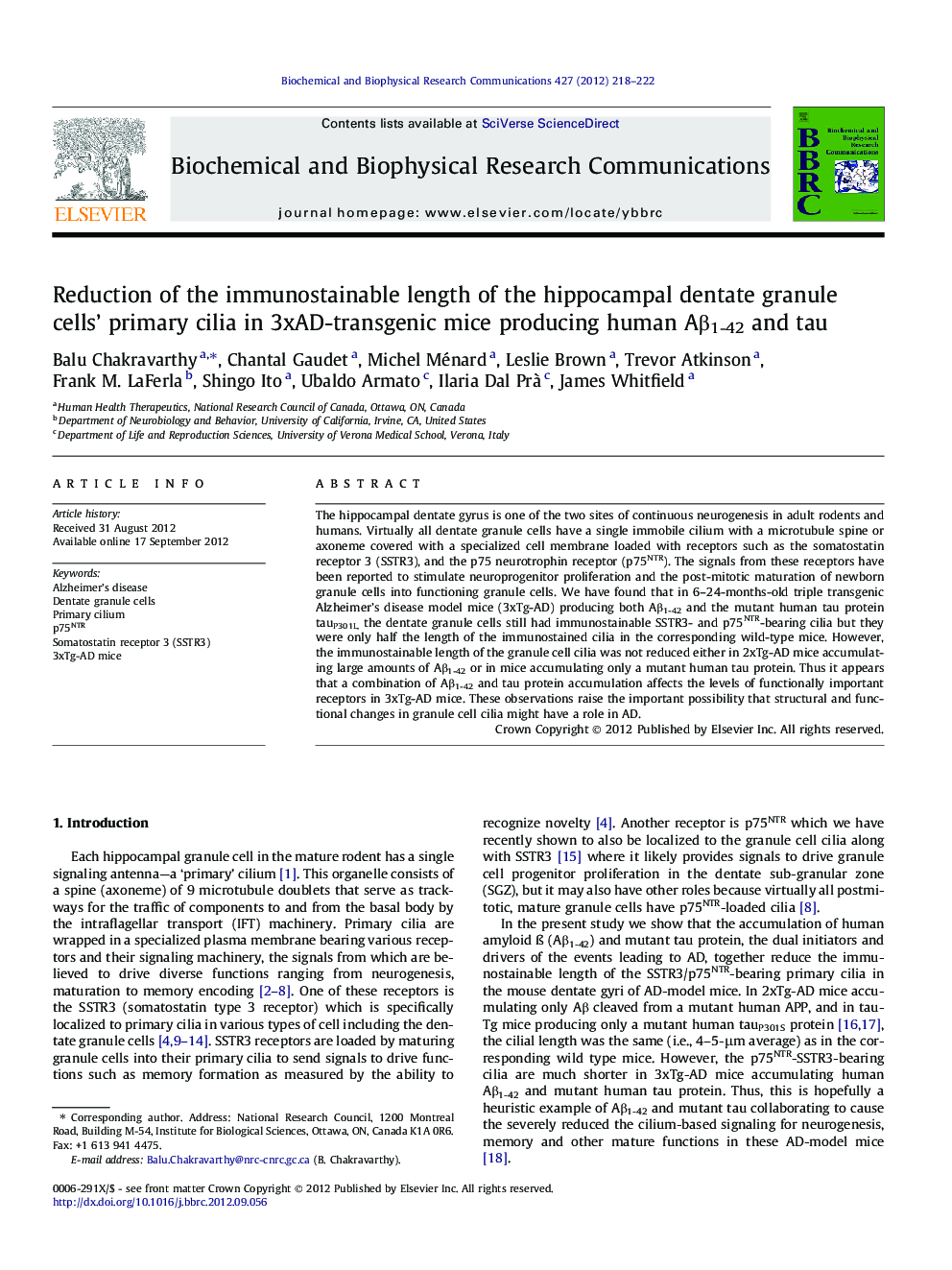| Article ID | Journal | Published Year | Pages | File Type |
|---|---|---|---|---|
| 1929503 | Biochemical and Biophysical Research Communications | 2012 | 5 Pages |
The hippocampal dentate gyrus is one of the two sites of continuous neurogenesis in adult rodents and humans. Virtually all dentate granule cells have a single immobile cilium with a microtubule spine or axoneme covered with a specialized cell membrane loaded with receptors such as the somatostatin receptor 3 (SSTR3), and the p75 neurotrophin receptor (p75NTR). The signals from these receptors have been reported to stimulate neuroprogenitor proliferation and the post-mitotic maturation of newborn granule cells into functioning granule cells. We have found that in 6–24-months-old triple transgenic Alzheimer’s disease model mice (3xTg-AD) producing both Aβ1-42 and the mutant human tau protein tauP301L, the dentate granule cells still had immunostainable SSTR3- and p75NTR-bearing cilia but they were only half the length of the immunostained cilia in the corresponding wild-type mice. However, the immunostainable length of the granule cell cilia was not reduced either in 2xTg-AD mice accumulating large amounts of Aβ1-42 or in mice accumulating only a mutant human tau protein. Thus it appears that a combination of Aβ1-42 and tau protein accumulation affects the levels of functionally important receptors in 3xTg-AD mice. These observations raise the important possibility that structural and functional changes in granule cell cilia might have a role in AD.
► Aβ and tau-induced neurofibrillary tangles play a key role in Alzheimer’s disease. ► Aβ1-42 and mutant tau protein together reduce the primary cilium length. ► This shortening likely reduces cilium-dependent neurogenesis and memory function. ► This provides a model of an Aβ/tau targeting of a neuronal signaling organelle.
